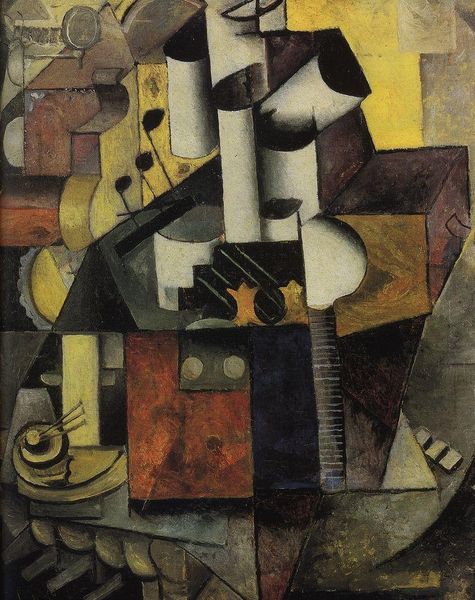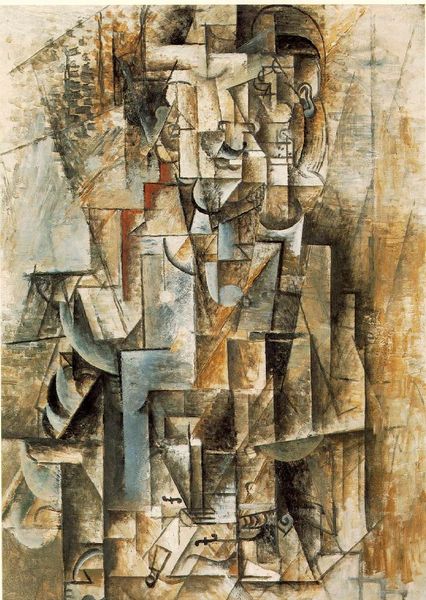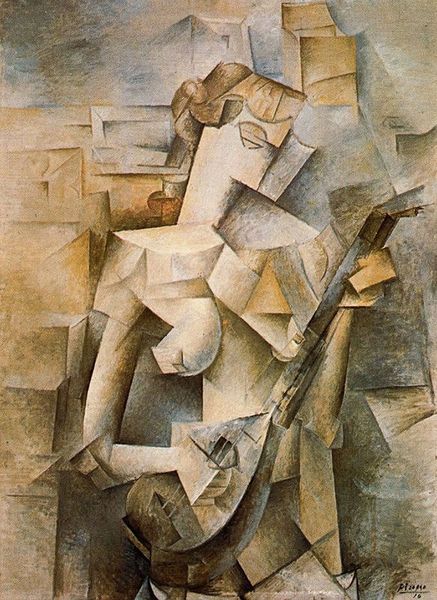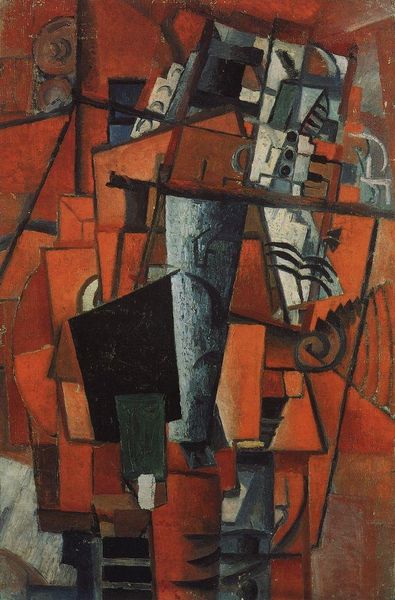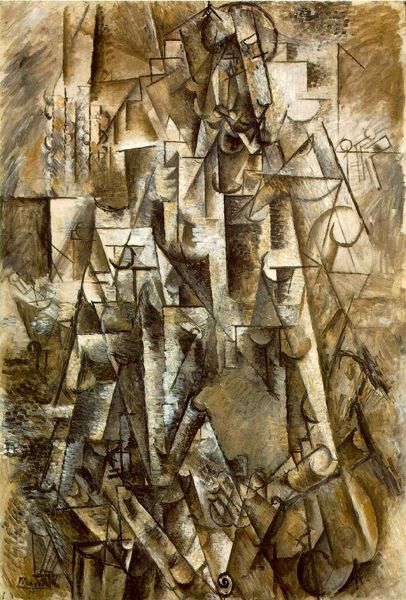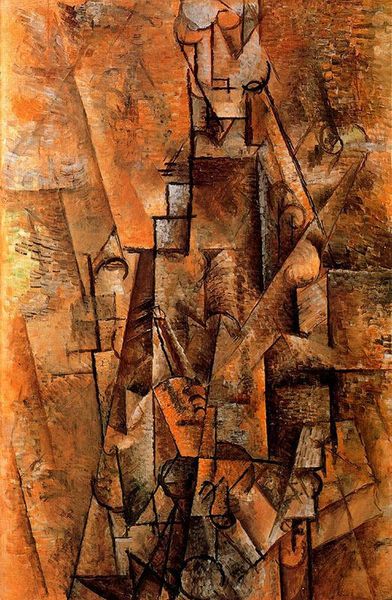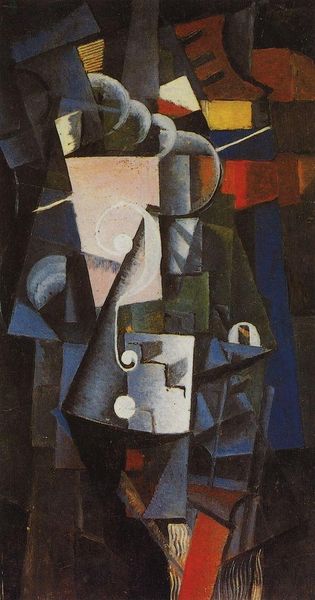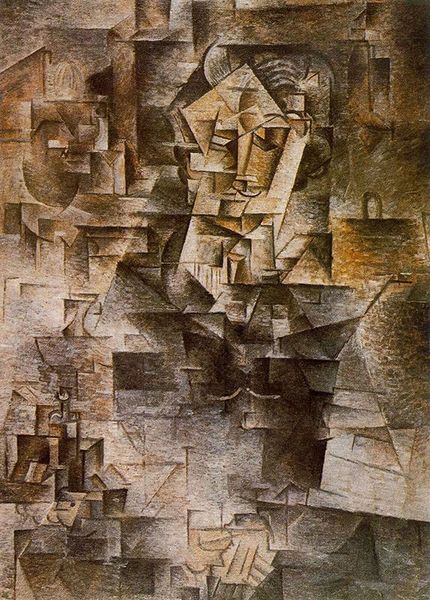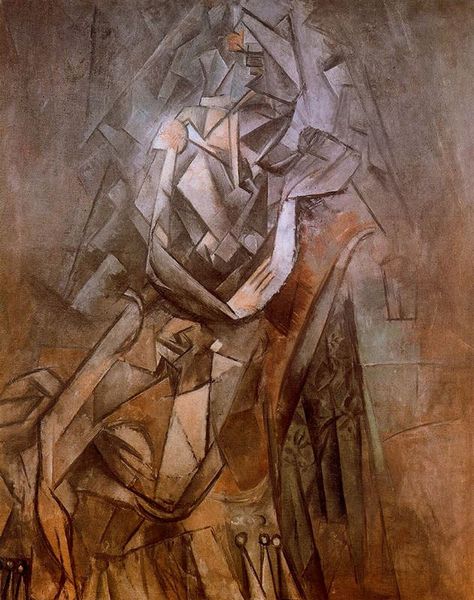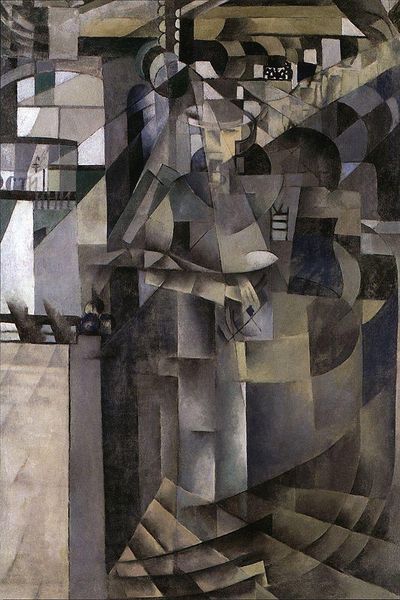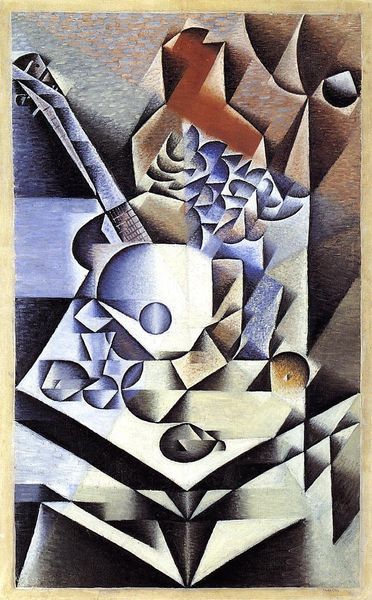
collage, painting, oil-paint
#
portrait
#
cubism
#
collage
#
painting
#
oil-paint
#
figuration
#
oil painting
#
male-portraits
#
geometric
#
modernism
Dimensions: 135 x 82 cm
Copyright: Public domain US
Editor: So, this is "The Aficionado (The Torero)" by Pablo Picasso, created in 1912 using oil paint and collage. It's a really interesting portrait. All those geometric shapes... what strikes me is how it both conceals and reveals its subject simultaneously. How do you interpret this work? Curator: Well, let’s consider the historical moment. Cubism, by 1912, was already challenging academic traditions, disrupting conventional representation. The subject, a "Torero," or bullfighter aficionado, connects us to Spanish cultural identity, deeply intertwined with notions of masculinity and spectacle. Why do you think Picasso chose this subject matter? Editor: Perhaps to challenge traditional portrayals of masculinity? Cubism seems to fragment the idea of the hero. Curator: Precisely! And consider the inclusion of collage— bits of the “real world” intruding on the painted surface. We see fragments of a newspaper, for example. These were revolutionary strategies in their time. What do these insertions suggest about the public’s evolving understanding of news, propaganda, and national pride? Editor: It’s almost like he's saying identity is constructed from different, sometimes conflicting, fragments of information that are being digested. Curator: Exactly. Think also about how these images of bullfighting are loaded with symbolism, often bordering on political allegory regarding Spanish identity. And do we, by extension, then perpetuate it just by giving the work our attention? Editor: That's a compelling thought! It almost turns us, the viewers, into active participants in the continuing impact of such imagery. I initially saw the work as an innovative portrait, but now, thinking about its socio-political context and cultural implications... it's a lot more complex. Curator: And that's the beauty of art history—recontextualizing our perceptions.
Comments
No comments
Be the first to comment and join the conversation on the ultimate creative platform.
